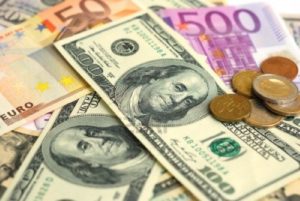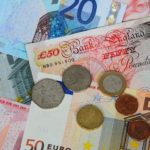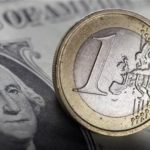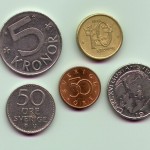 The euro fell against the US dollar, following data that showed US wholesale prices rose more than expected last month, adding to the case the Federal Reserve might have to raise borrowing costs sooner-than-projected.
The euro fell against the US dollar, following data that showed US wholesale prices rose more than expected last month, adding to the case the Federal Reserve might have to raise borrowing costs sooner-than-projected.
EUR/USD touched a session low at 1.3863 at 12:30 GMT, after which the pair trimmed losses to trade little changed at 1.3884 by 13:42 GMT, losing 0.04% for the day. Support was likely to be received at April 10th low, 1.3836, while resistance was to be met at March 19th high, 1.3933.
Core PPI, which excludes prices of volatile categories such as food and energy, rose 0.6% last month, the most since July 2008, outstripping analysts projections for a 0.2% increase, data by the US Bureau of Labor Statistics showed today. In February producer prices unexpectedly declined 0.2% from the previous month. On year-over-year basis, core PPI advanced 1.4% in March, the most in three months, exceeding analysts estimates for a 1.1% gain and following a 0.9% advance in the previous month. The indicator is quite sensitive to changes in aggregate demand, thus, it can be used as a leading indicator for economy. However, because of its restrained scope, it is not suitable for future inflation forecasts.
PPI rose 0.5% last month, the most since June, following a 0.1% drop in the previous month. Analysts had expected the index to rise 0.1%. On year-over-year basis producer prices advanced 1.4%, the most since July, beating expectations for a 1.1% gain and after producer prices increased 1.1% in February. The index reflects the change in prices of over 8 000 products, sold by manufacturers during the respective period. The PPI differs from the CPI, which measures the change in prices from consumer’s perspective, due to subsidies, taxes and distribution costs of different types of manufacturers in the country. In case producers are forced to pay more for goods and services, they are more likely to pass these higher costs to the end consumer. Therefore, the PPI is considered as a leading indicator of consumer inflation.
Today’s PPI report was the third using a broader index that encompasses 75% of the US economy, compared to only a third for the old metric, which measured the costs of goods alone. After its first major revision in 36 years, the PPI now measures prices received for exports, services, government purchases and construction.
Meanwhile, consumer prices in Germany, the largest euro area economy rose in line with estimates.
Consumer prices rose 0.3% last month, in line with analysts estimates and matching the preliminary reading. On year-over-year basis, CPI advanced 1%, also in line with projections and matching the preliminary reading. However, price pressure in Germany and the whole euro zone remains weak, which may prompt the ECB to intervene to prevent a Japan-style deflation spiral.
Consumer prices in the euro area rose 0.5% last month, which was a quarter of the ECB’s target of just below 2% and the weakest since October 2009. That prompted the ECB President Mario Draghi to say last week that central bank’s officials “do not exclude further monetary policy easing” and the Governing Council of the central bank had discussed possible measures to fight against deflation. Draghi also added that all the members were “unanimous” that the ECB should explore new policy avenues, contrary to what some officials commented later.
ECB executive board member Yves Mersch said deflationary risks weren’t “imminent” and Governing Council member Ewald Nowotny signaled the policy makers don’t need to take immediate actions.
The deflation risks in the 18-nation common currency area are coupled with a strong exchange rate, which curbs the competitiveness of the euro zone’s exporters and undermines the economic recovery. The euro has advanced almost 6% against the greenback in the past 12 months.
The exchange rate is not part of the political prerogatives of the ECB, but Draghi commented that he is watching it “with attention”.
Sixty percent of economists, in a Bloomberg News poll, forecast the central bank may take steps to weaken the euro.
Elsewhere, USD/JPY hit a session low at 101.33 during early Asian trading session, after which the pair consolidated to trade little changed at 101.60, adding 0.06% for the day. Support was likely to be found at March 19th low, 101.30, while resistance was to be met at April 10th high, 102.14. The pair headed for a 1.6% gain this week, the first in a month.





